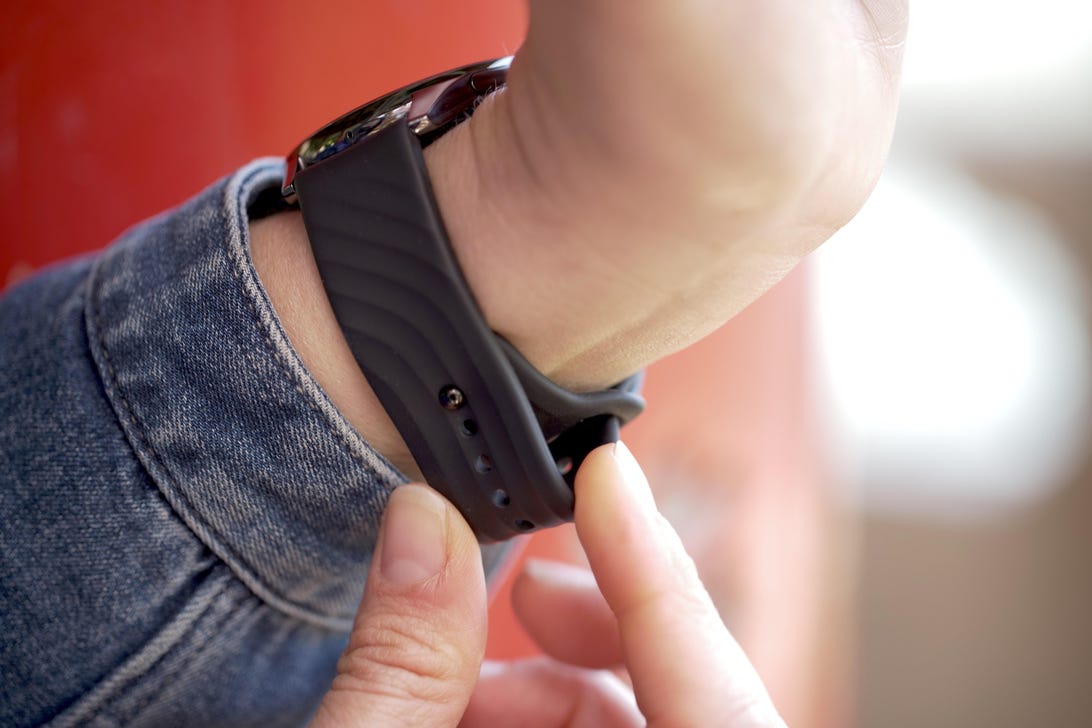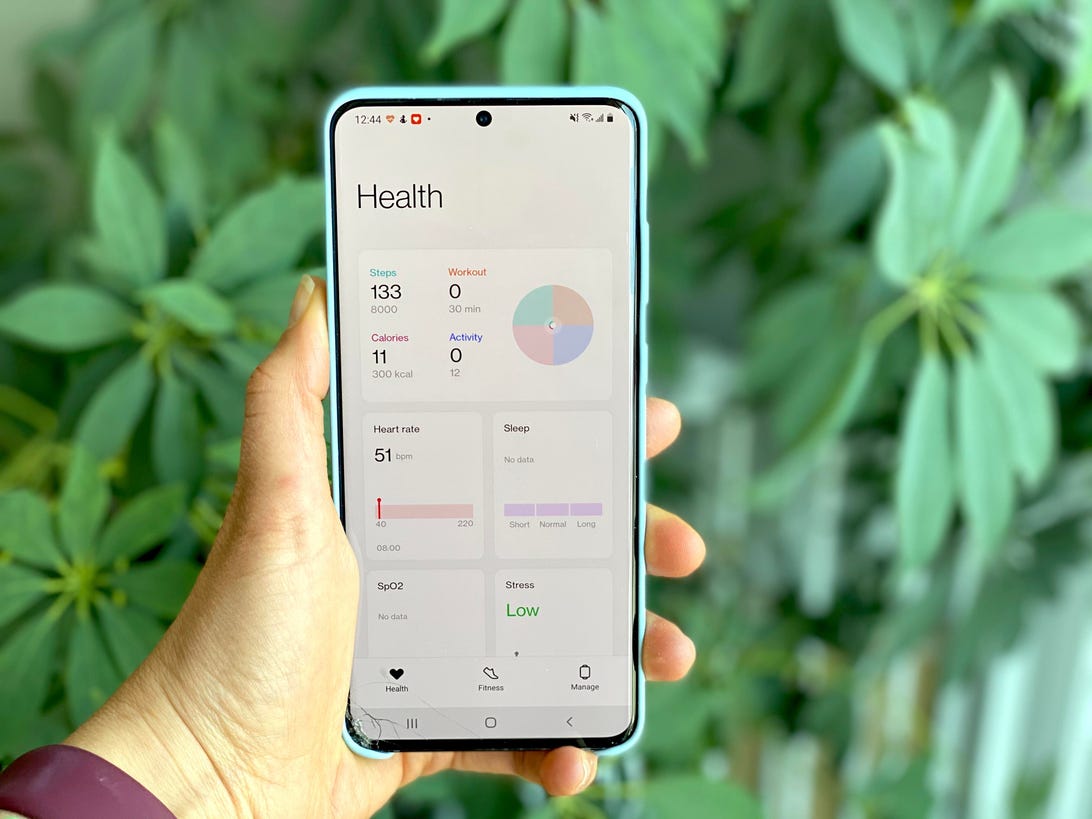The OnePlus Watch looks and feels like a premium smartwatch without the price tag to match. For $159 (£149, roughly AU$270) the OnePlus Watch offers basic smartwatch features like getting notifications from your phone, plus advanced health features like blood oxygen monitoring, high and low heart rate alerts and a big battery that can last for a week or more. On paper, it sounds almost too good to be true, in practice, it is.
In my week of testing I experienced serious connectivity issues and found some of the health metrics to be inaccurate. In its current state it's hard to recommend the OnePlus Watch, but I expect it to evolve and improve in the coming months as the company addresses some of these issues in the public version of the app.
Like
- Elegant, circular design
- Cheaper than its competitors
- Battery lasts a week (or longer)
Don't Like
- Watch regularly loses connection with the phone
- Heart rate data is unreliable
- No mobile payments
For the purpose of this review I was given an early version of the OnePlus Health app, which I loaded onto my Samsung Galaxy S20 Ultra. The OnePlus Watch is only compatible with Android devices at launch, but the company says it will be rolling out iOS compatibility in the future.

The silicon watch bands on the OnePlus Watch are great for working out, but can easily be swapped out for third party alternatives.
Celso Bulgatti/CNETNothing cheap about its design
It's rare for a product to look better in person than in photos, but the OnePlus Watch is the exception. I was immediately taken by its strikingly large 46mm circular screen, enclosed in a sleek stainless steel frame and slim silhouette which rested comfortably on my wrist. I like the simple design: no dials or rotating bezels, just the touch screen and two small buttons on the side. The silicone watch bands can easily swap out with a quick release button latch. My one complaint with the design is that the watch only comes in one size which overwhelmed my wrist and would suit larger wrists better. Fortunately, it didn't get in my way too much during sleep.
Very basic smartwatch functionality
The OnePlus Watch is Wi-Fi only, meaning it's a perfectly acceptable phone companion (when it actually connects), but is far from a phone replacement. It mirrors notifications, makes and answers phone calls, and can serve as a remote for your phone camera or OnePlus TV. It can store music, but you have to load it manually using the mobile app. It has no Spotify support, or any third party apps for that matter. It also lacks NFC for mobile payments.
My biggest issue with the watch was that the connection with the phone was inconsistent. It would randomly disconnect from the phone and I'd have to unlock my phone, open the app and sometimes even re-pair the watch for it to sync. This would happen even when the phone was in Bluetooth range. As a result, I would stop receiving notifications on the watch and the watch would stop transmitting data to the app.

Data from the watch didn't always sync to the OnePlus Health app on the phone.
Vanessa Hand Orellana/CNETHealth and fitness metrics need work
The watch can track over 110 different workout types including swimming, as it has a 5ATM IP68 rating which means it is water resistant down to 50 meters. You should be able to leave your phone behind on a run, because the OnePlus Watch does have built-in GPS to track your route, but it's not the most reliable. I went on a couple of runs where the GPS didn't connect and as a result I couldn't see my route after I completed my run.
I like that it breaks out your heart rate zones based on intensity during workouts so I could see how hard I was working in each exercise, but the numbers were off. I compared the heart rate from the watch to my chest strap -- the gold standard for tracking heart rate during a workout -- and noticed some inconsistencies between the two. Heart rate on the OnePlus Watch lagged behind the strap's during my runs and couple be anywhere from 5-15 beats per minute off when compared in real time. Once on the workout summary in the app, the numbers seemed to even out and showed a much smaller difference in peak and average bpm between the watch and the chest strap, but if you're looking for minute by minute accuracy this is not the watch for you.

Heart rate data is unreliable on the OnePlus Watch.
Vanessa Hand Orellana/CNETEven smartwatches that have received medical accreditations like FDA clearance should never be used in place of a physician, but the OnePlus Watch missed the mark on more than just heart rate tracking during a workout. I wasn't expecting hospital grade accuracy from the OnePlusWatch, but having viable heart rate data is important to fitness tracking, calculating calories burned and for heart rate alerts.
In addition to continuous heart rate monitoring, the OnePlus Watch also alerts you when your heart rate is higher or lower than a certain threshold. I received a high heart rate alert from the watch one morning while lying in bed. Concerned, I strapped on another HR tracker to cross-check and my heart rate was in the normal range. The false positive from the watch was enough to put me on edge for the rest of the day.
Read more: OnePlus Watch vs. Apple Watch spec comparison: Not in the same league
The watch also measures SpO2 (blood oxygen levels) on demand or during sleep as well as stress levels throughout the day using heart rate variability. When I took a reading on demand, the SpO2 data was within range of my pulse oximeter (the standard device for this type of measurement), but I felt as though the low stress reading was not indicative of my actual stress level during a particularly nerve-wracking week. This anomaly is not exclusive to the OnePlus Watch however, as I've had similar conflicting results from other heart rate-based stress detectors on other smartwatches.
The biggest issue I had was that none of my sleep data synced with the OnePlus Health app, including the SpO2 data. Every morning the watch gave me a brief sleep summary on the screen, which appeared to reflect my activity at night, but after six nights with the watch, none of this data ever showed up or synced to the app. OnePlus says the final version of the app will address the sleep tracking issue, but I have yet to test it out for myself. I will update this review once I have.
Battery life is on track
The one feature it does deliver on is battery life. I didn't have to charge it once in the seven days I had it on my wrist. The company claims the watch will last two weeks between charges with normal use, but features like SpO2 tracking at night and GPS use start to add up, so I'm ending my week with little to spare. This is still miles ahead of the battery life from some of its competitors like the Apple Watch SE and Galaxy Watch Active 2 -- which don't go past the two-day mark -- and not having to charge it every night before bed is great for sleep tracking, as long as you can actually get the watch to sync in the morning to see your data. But despite the long-lasting battery, you do sacrifice certain things like an always on display (it's raise-to-wake only) and overall screen brightness as I found it hard to see the screen in direct sunlight even with the brightness set to maximum.
The watch charges quickly: You can get a full day of power from five minutes on the charger, or wait 20 minutes for a week's worth of charge.
Pending fixes, proceed with caution
The OnePlus Watch is the company's first smartwatch so I expect it to get better with time. If you're already in the OnePlus ecosystem, the price alone should be reason enough to consider it, once the company has had more time to iron out the kinks. While it does most of what it promises on paper, it was particularly buggy at launch. The good news is that this may improve as OnePlus fixes its syncing and software issues with subsequent app updates. But the inconsistencies in metrics like heart rate tracking during a workout and high heart rate alerts may be harder to fix, and I still wouldn't rely on this as a serious sports watch.
"bad" - Google News
April 17, 2021 at 04:00PM
https://ift.tt/3x4HRpC
OnePlus Watch Review: Good hardware plagued by bad software - CNET
"bad" - Google News
https://ift.tt/2SpwJRn
https://ift.tt/2z7gkKJ

No comments:
Post a Comment